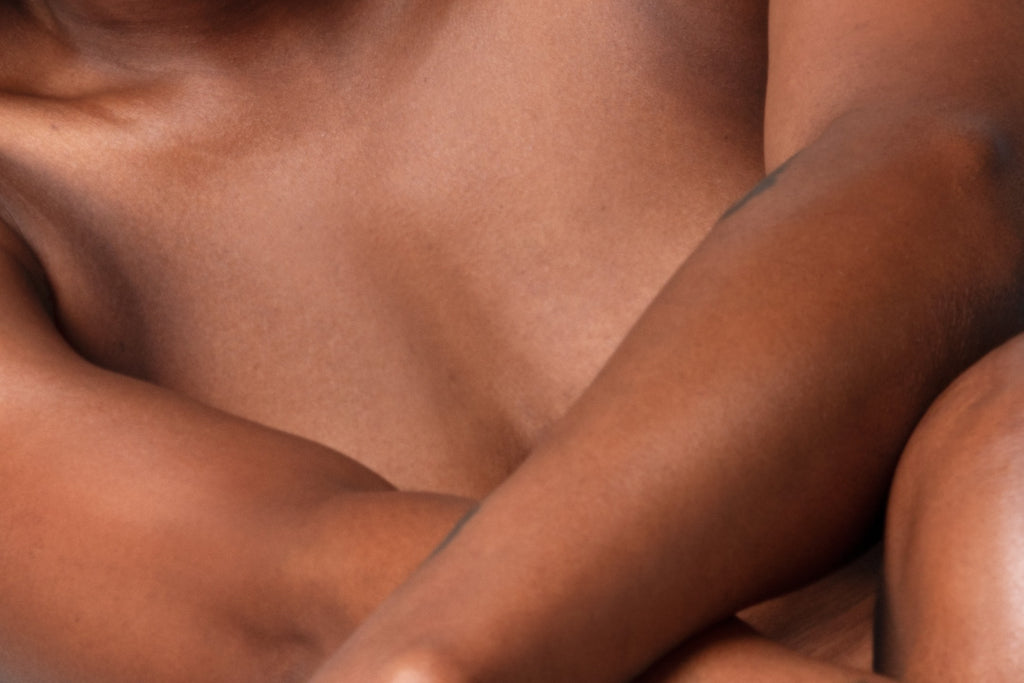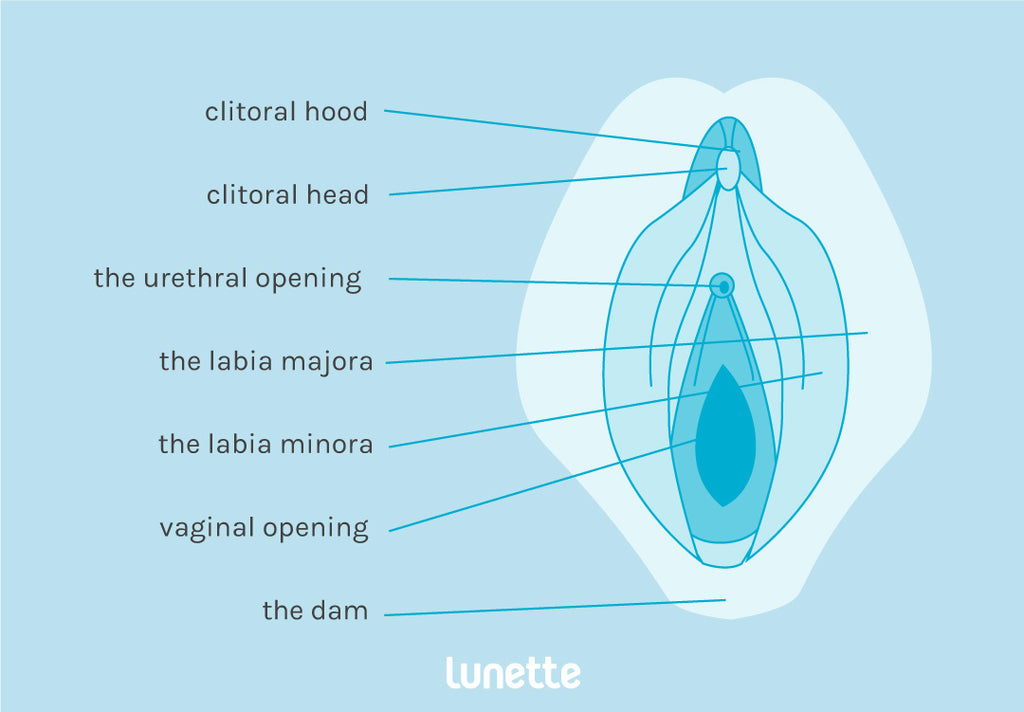Vagina Anatomy 101

When was the last time you looked at your vagina? Like, really looked at it? If you’re like most people, chances are high that your answer is not recently — or not ever.
if you knew more about your body, and had better, more credible information about period care products, you might be able to make more informed choices. Right?
Real talk, looking at yourself while squatting over a mirror can feel weird. But that’s only because many of us where taught that our vulvas (note: your vulva is the external part of the female genitals, your vagina is the internal canal) are “private” areas.
This is true in the sense that you have complete control over who or what you allow down there. But it’s your body and knowing what your anatomy looks like — and what it’s supposed to look like — is an important part of staying in charge of your reproductive health.
What does a normal vulva look like?
Research has shown that 50% of women worry about whether their vulva looks “normal”, 20% of women don't know what it's supposed to look like, but 1 in every 7 women has considered getting plastic surgery on it.
And it’s no wonder — the female anatomy is glossed over in sexual education and rarely mentioned again once you're out of school. For some people, the only info they get about what vulvas look like is from porn, which can give a very disillusioned sense of what's normal.
The truth is that vulvas (and vaginas) come in a range of shapes, sizes, and colors and each one is unique. Some people have labia that hang down, some have clitorises that are barely visible (but still powerfully pleasurable), some have a mix of brown and pink skin...you get the picture. A normal vulva is a healthy vulva, not one that looks a certain way.
Feel free to grab a mirror as you read this
Here at Lunette, we believe that everybody should take the time to get to know themselves and their body. The deeper understanding of how the two are connected will lead to a fuller, more rewarding life. Checking out your vulva while you learn about all of its different parts can help you become more familiar with your anatomy—and there’s a lot to learn.

External Anatomy
As the term implies, the external female anatomy includes the genitals that are outside the body. Collectively, this region is called the vulva. The vulva includes the outer and inner lips of the labia (labia majora and labia minora), clitoris, and the openings to the urethra and vagina ~the whole enchilada~. This entire area is often mistakenly referred to as the vagina — what you can see externally is simply the vaginal opening. You’ll learn more about the vagina later in the internal anatomy section.
Mons (or Mons Pubis)
The mons pubis, or mons veneris, is the slight elevation above the pubic bone. Its job is to cushion and protect the bone during sexual intercourse. After puberty, this area becomes covered in pubic hair.
Labia Majora (outer labia)
Also known as the outer lips, the labia majora are the outer folds of skin that surround the vaginal opening, acting as a protective layer. While oftentimes larger than the labia minora, it is not uncommon for the inner lips to be the same size, if not larger than the outer lips. The labia majora can vary in color. For example, they can be pink, crimson, or reddish brown. They can also vary in length from short to long, and may appear smooth or wrinkled. So don’t worry, your vulva is not weird.
Labia Minora (inner labia)
Also known as the inner lips, the labia minora are the thin folds of skin within the labia majora. The inner lips cover the vaginal and urethral openings. This area within the labia minora is called the vestibule. The inner lips of the labia are the ultimate multi-taskers. From protecting the vestibule from bacteria to housing nerve endings that enhance sexual pleasure, there’s no doubt that the labia minora is majorly awesome.
Inner labia, like all other parts of your vulva, look different from person to person. Some people have inner labia that hang down past their outer labia, while others have labia that are so small you can barely see them. One person could even have inner labia that looks different on each side — totally normal!
Clitoris + Glans
Right below your mons, your inner labia connect to form your clitoral hood. This hood is connected to your glans, which is the very tip of your clitoris (the part you can see outside of your body). The clitoral hood protects your very sensitive (think: over 8,000 nerve endings!) clitoris.
Many people think that the tip of the clitoris is all there is to it, but that’s not the case. In fact, your clitoris is almost as big as a penis but it extends back into your body, making a wishbone shape, called your crura. Each side of your crura is about 3 inches long and is made up of erectile tissue that plays an important role in sexual pleasure and orgasm. Your clitoris is the only part of your body that is made entirely for your sexual pleasure.
Pretty amazing, right?
Urethral Opening
The urethra is a tube connected to the bladder through which your urine passes from the body. The urethral opening is located just below the clitoris.
Vaginal Opening
When people say “vagina”, what they often mean is their “vulva”, which is the female anatomy we’re talking about here. The word vagina really refers to the internal canal (where penises or toys go in and babies come out). Below your urethral opening is your vaginal opening, where you insert things like your menstrual cup. The vaginal opening expands and contracts but, despite what some people say, they don’t stay stretched.
Vulva
Oftentimes referred to as the vagina, the vulva is the actual name for the area where you’ll find your urethral opening, vaginal opening, labia (majora and minora) and clitoris.
Dam
The dam, also known as the perineum, is the region between your vulva and your anus. This part of your body has a lot of nerve endings and can feel good when stimulated and acts as a connector.
Anus
The anus is the opening from which feces leaves your body through the intestines. After puberty, this area oftentimes becomes covered in pubic hair.

Internal Anatomy
The internal anatomy is all of the parts you can’t see, and where the reproductive magic happens. Whether or not a baby is present, the hormonal functions that come with your internal anatomy impact your everyday life.
Vagina
The vagina is the muscular tube that connects your external genitals to the cervix of the uterus. It is approximately 2 to 4 inches long and can double in length when aroused. (WHAT?!) The walls of the vagina can be described as layers of wrinkles or folds of muscular tissue. Menstrual blood will flow from the uterus through the cervix to exit the body through the vagina. Mucus is generated to keep the vagina moist in order to lubricate itself for sex, trap semen for conception and cleanse. How much mucus is created during a cycle can vary. Typically, it will increase about two weeks prior to menstruation, which can be a little unsettling until you realize it’s a totally natural occurrence that helps maintain the health of the vagina. Just remember, characteristics of the discharge amount, color and texture will vary from person to person, and throughout different phases of the menstrual cycle.
Hymen
Also known as the vaginal corona, the hymen is located just inside the opening to the vagina. It is a thin membrane of tissue that partially covers the vaginal opening and tends to erode over time due to hormones, natural discharge and vaginal sex. But the absence of the hymen is not an indicator of lost virginity, as it can often be broken during many non-sexual activities like sports. Heck, some people don’t have one at all.
Pubic Bone
The pubic bone is a joint where the two halves of the pelvis meet. You can locate it behind your vaginal opening. Being able to identify the curve of your pubic bone from within the vagina is super important for proper placement of a menstrual cup, as your menstrual cup needs to be positioned just beyond the pubic bone.
G-Spot
The Grafenberg spot, more commonly known as the G-spot, is located on the front wall of the vagina (abdomen side) just past the pubic bone and has a somewhat spongy feel. It may be difficult to find if your fingers can’t reach, but keep in mind that it may be elusive to pinpoint. However, for many it is an erotic zone that has the potential to contribute greatly to their sexual arousal.
Cervix
The cervix is a narrow, neck-like passage that forms at the lower end of your uterus. The position of the cervix can vary from person to person and changes throughout your menstrual cycle. If you search for it using your finger, you’ll find it feels a bit like the tip of your nose. The cervix is where menstrual blood leaves the uterus so it can pass through the vagina. Semen also travels through the cervix to enter the uterus. During pregnancy, the cervix will dilate, or stretch, to allow the baby to pass through during a vaginal delivery. But don’t worry, unless you’re in the process of delivering a baby, nothing but menstrual blood or semen will be able to pass through your cervix.

Reproductive organs
The female reproductive system has two functions: The first is to produce egg cells, and the second is to protect and nourish the offspring until birth.
Uterus
The uterus is a muscular pear-shaped structure where a fetus will develop during pregnancy. If an egg enters the uterus and isn’t fertilized by sperm, the inner lining of the uterus will shed and pass from the body. This is menstruation.
Fallopian Tubes
Fallopian tubes extend from either side of the uterus and are the path in which a released egg must travel to get to the uterus during ovulation. If that egg isn’t fertilized, it will shed from the uterus with the inner lining during menstruation.
Ovaries
Lumpy and approximately the size of a grape, the ovaries are positioned on either side of the uterus where they produce and store your eggs.
Pelvic Floor
The pelvic floor, or pelvic diaphragm, can be described as a sling of muscles and connective tissue spanning the pelvic opening. Located underneath the pelvis, the pelvic floor not only supports the uterus and vagina, but also the bladder, intestines and rectum – ultimately holding them in place and allowing them to function correctly. It is these muscles that will play a major part in the use and removal of your menstrual cup.

